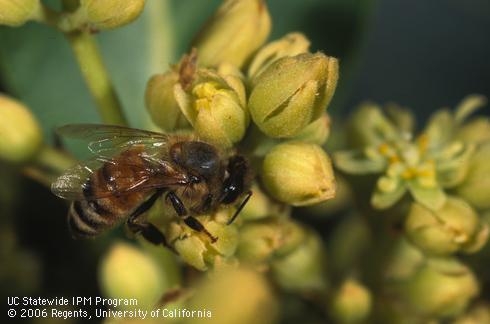
Posts Tagged: varroa mite
Another Mite Threatening Honeybees
This article is from Florida Grower News. Thanks for Jim Lloyd-butler for pointing it out.
FLG-Editorial@MeisterMediaww.com
A sister species of the Varroa destructor mite is developing the ability to parasitize European honeybees, threatening pollinators already hard pressed by pesticides, nutritional deficiencies, and disease, a Purdue University study says.
Researchers found that some populations of Varroa jacobsoni mites are shifting from feeding and reproducing on Asian honeybees, their preferred host, to European honeybees, the primary species used for crop pollination and honey production worldwide. To bee researchers, it's a grimly familiar story: V. destructor made the same host leap at least 60 years ago, spreading rapidly to become the most important global health threat to European honeybees.
While host-switching V. jacobsoni mites have not been found outside of Papua New Guinea, Purdue researchers Gladys Andino and Greg Hunt say vigilance is needed to protect European honeybees worldwide from further risk.
“This could represent a real threat,” said Andino, a bioinformatics specialist with Information Technology at Purdue. “If this mite gets out of control and spreads, we might have another situation like V. destructor.”
Varroa mites are obligate parasites, meaning their lifecycle is inextricably entwined with that of their bee hosts. The mites can do serious damage to their hosts' health due to their relatively large size – “think of a tick as big as your fist,” Hunt said. Mites latch on to bees and feed on their hemolymph, insects' rough equivalent to blood, leaving behind open wounds that are susceptible to infection. They can also transmit diseases such as deformed wing virus and have been linked to colony collapse disorder.
To gain insight into the biology behind V. jacobsoni‘s host switch, Andino and Hunt, professor of behavioral genetics and honeybee specialist, studied the differences in gene expression between V. jacobsoni mites that fed and reproduced on Asian honeybees and those that parasitized European honeybees. Knowing which host cues mites respond to and the genes involved could lead to potential control strategies, the researchers said.
“If we can understand the mechanism, we might be able to disrupt, block, or manipulate that,” Andino said. “But first we have to understand what is happening and which genes are involved in allowing the mites to shift to a new host.”
Andino and Hunt said the mites' leap to European honeybees likely occurred within the last decade. Previously, V. jacobsoni mites were occasionally found on European honeybees but seemed unable to produce healthy offspring, limiting their destructive capacity.
Catching the host transition in its early stages will allow researchers to continue to investigate the complex genetic details behind the shift and monitor infected European honeybees, Hunt said.
“This happened once with one species of mite, and it looks like it's happening again. Maybe if we catch this as it's beginning, we'll be able to figure out why it's happening or, down the road, stop it.”
The paper was recently published in BMC Genomics.
Funding for the study and an ongoing genome-sequencing project was provided USDA's-Agricultural Research Service and the USDA National Institute of Food and Agriculture.
This article is from Florida Grower News

honey bee in avocado
